Mixed into pasta or used as a salad topping, sundried tomatoes are packed with intense tomato flavor that can take any recipe to the next level. But while most cooks use store-bought sundried tomatoes, if you have a backyard garden, you can easily grow your own tomatoes and make sundried tomatoes right at home. However, if you want to make the best-sundried tomatoes, you need to start off by growing the right tomato plants.
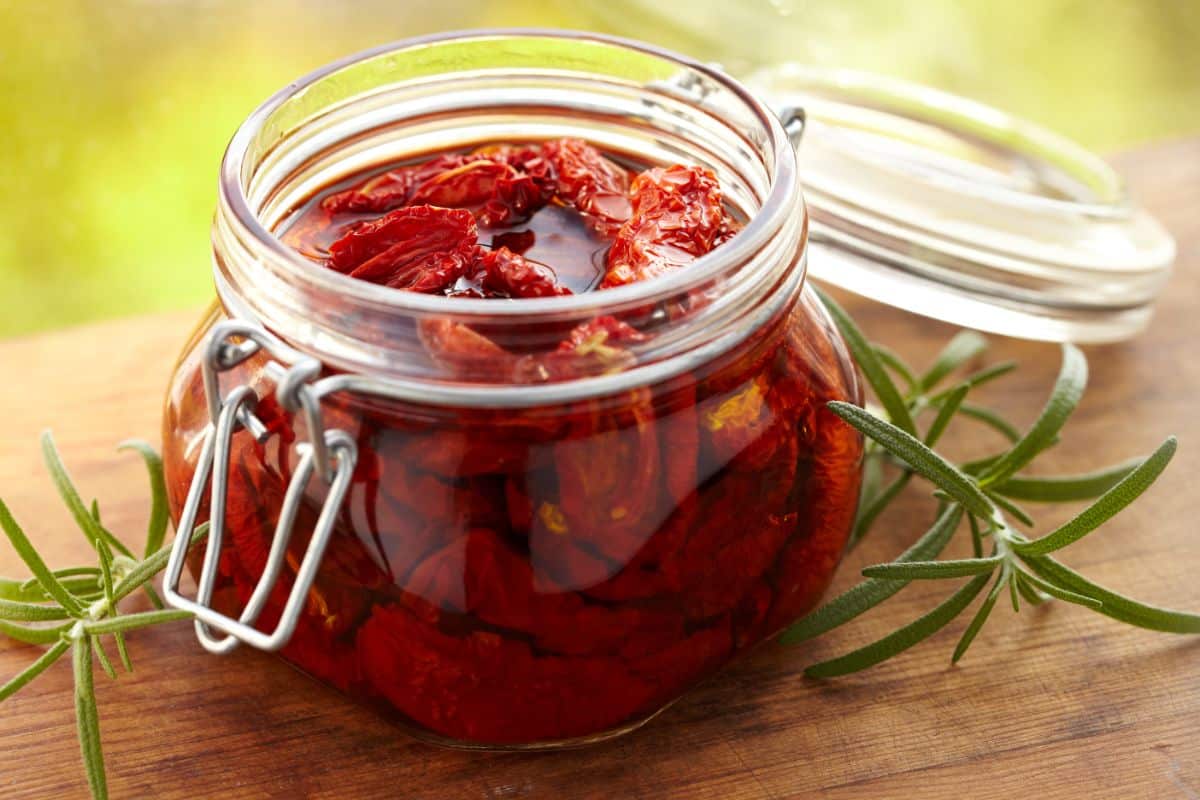
While you can make sundried tomatoes out of any tomato variety, the best-sundried tomatoes around are usually produced from paste-type tomatoes and other tomato types with meaty flesh and minimal seeds. In the list below, we’ll introduce you to some of the best tomato cultivars for drying. When it comes to making mouthwatering sundried tomatoes, these are the tomato plants to grow!
Jump to:
- 15 best seeds to grow for sundried tomatoes
- 1. San Marzano
- 2. Amish Paste
- 3. Roma
- 4. Principe Borghese
- 5. Hog Heart
- 6. Grandma Mary’s
- 7. Costoluto Genovese
- 8. Costoluto Fiorentino
- 9. Zapotec
- 10. Opalka
- 11. Roman Candle
- 12. Black Plum
- 13. Speckled Roman
- 14. Sunrise Sauce
- 15. Blue Beech
- Frequently asked questions
- Summary
15 best seeds to grow for sundried tomatoes
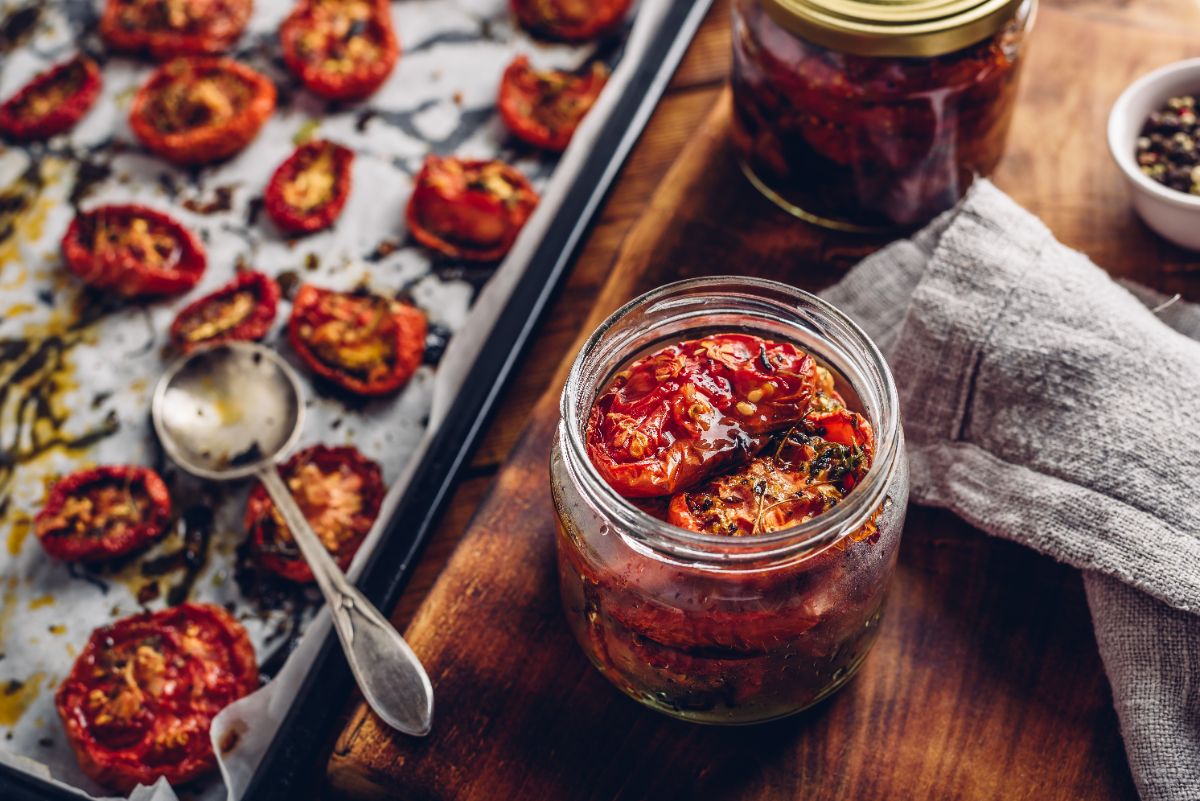
Both determinate and indeterminate type tomato plants can be made into sundried tomatoes. So, regardless of how big or small your garden is, you can always find a tomato variety or two for drying.
Since indeterminate type tomatoes grow larger, they can be a good choice for big garden plots, while pint-sized, determinate tomatoes tend to be easier to squeeze into small space gardens and containers. If you want to save seeds for next year’s garden, make sure the tomato types you select for sun-drying are open-pollinated or heirlooms.
1. San Marzano
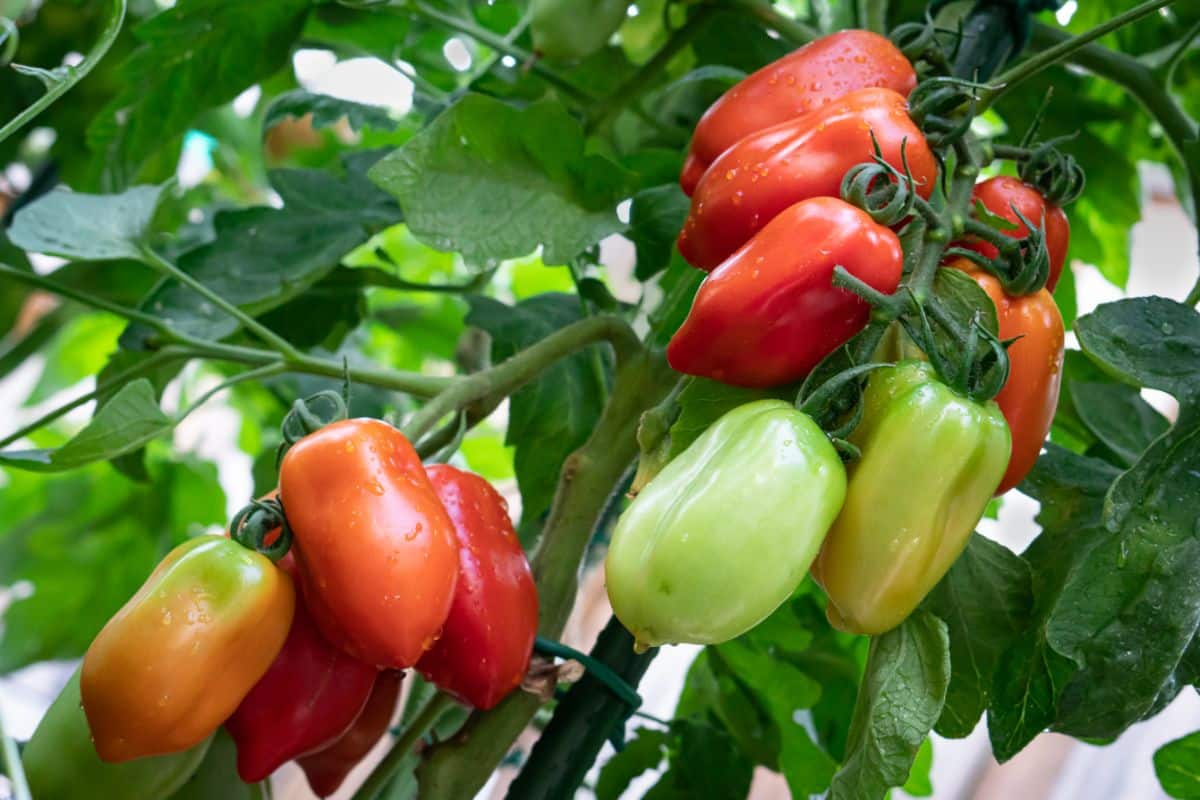
| Tomato variety: | San Marzano |
| Days to maturity? | 90 days |
| Indeterminate or determinate? | Indeterminate |
| Open-pollinated? | Yes |
| Tomato color? | Red |
‘San Marzano’ is one of the most famous tomato varieties around, and many gardeners consider it to be the only tomato you need for making homemade pasta sauce. However, while ‘San Marzano’ is mostly used for canning, it also dries beautifully, and it makes an intensely flavored sundried tomato. Part of this has to do with ‘San Marzano’s’ naturally complex flavor, but this tomato type also dries easily due to its meaty texture.
The true ‘San Marzano’ flavor comes from tomatoes that are grown in the volcanic soils of Italy, but you can bring some of that delicious, savory taste to your garden if you grow these plum tomatoes. As far as tomato varieties go, ‘San Marzano’ is considered by some to be “old fashioned,” but its popularity has lasted this long for a good reason! Not only are ‘San Marzano’ tomatoes delicious, but they’re also naturally resistant to many tomato diseases, including tomato mosaic virus and verticillium wilt.
2. Amish Paste
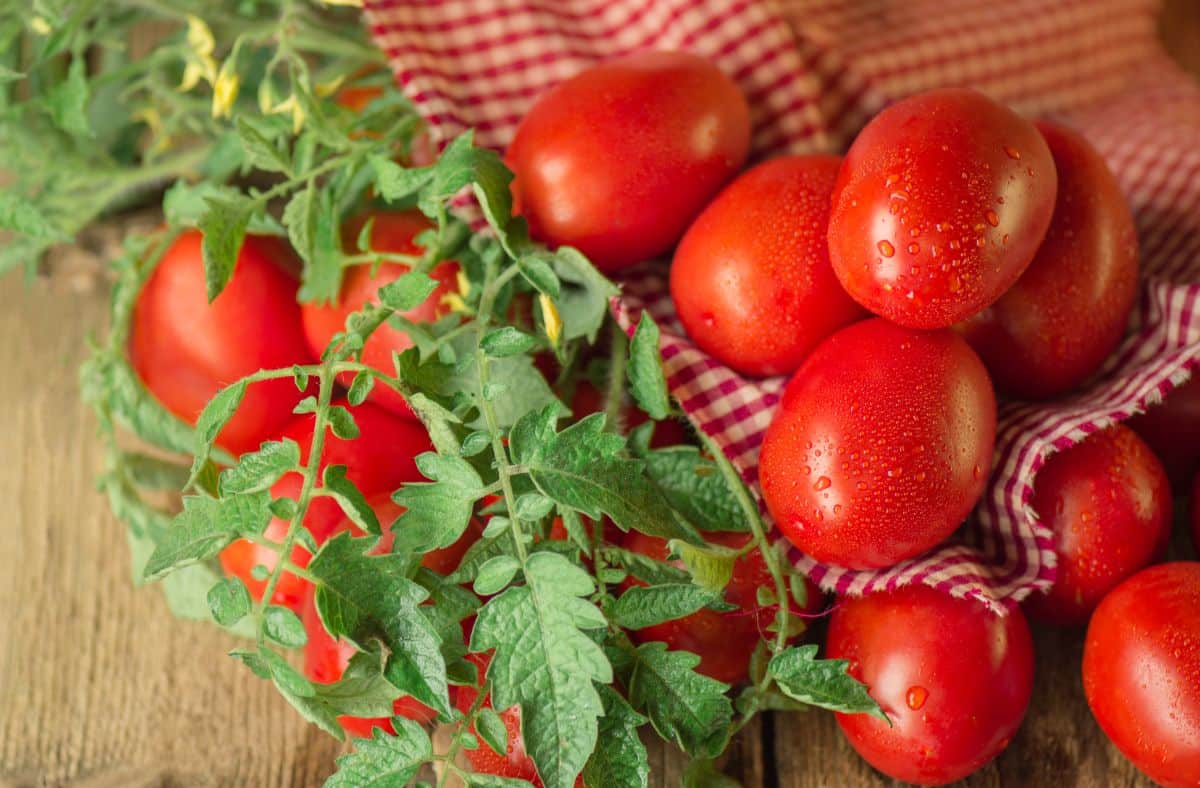
| Tomato variety: | Amish Paste |
| Days to maturity? | 80 days |
| Indeterminate or determinate? | Indeterminate |
| Open-pollinated? | Yes |
| Tomato color? | Red |
While ‘San Marzano’ is arguably the most famous Italian tomato variety, ‘Amish Paste’ gives ‘San Marzano’ a run for its money, and it's one of the most popular canning tomatoes in America. This old variety heirloom tomato was first developed in an Amish community in Wisconsin in the 1870s. Where I grew up in Pennsylvania, ‘Amish Paste’ was considered superior to ‘San Marzano’ and it was the tomato to grow if you wanted to make sauces, salsa, and other canned goods.
But while ‘Amish Paste’ is mostly known as a canning tomato, its large size and meaty flesh makes mouth-watering sundried tomatoes too. Even in years when these plants struggle, they still maintain their flavor and produce reliably well. In good years, ‘Amish Paste’ tomatoes have massive yields of fruit.
3. Roma
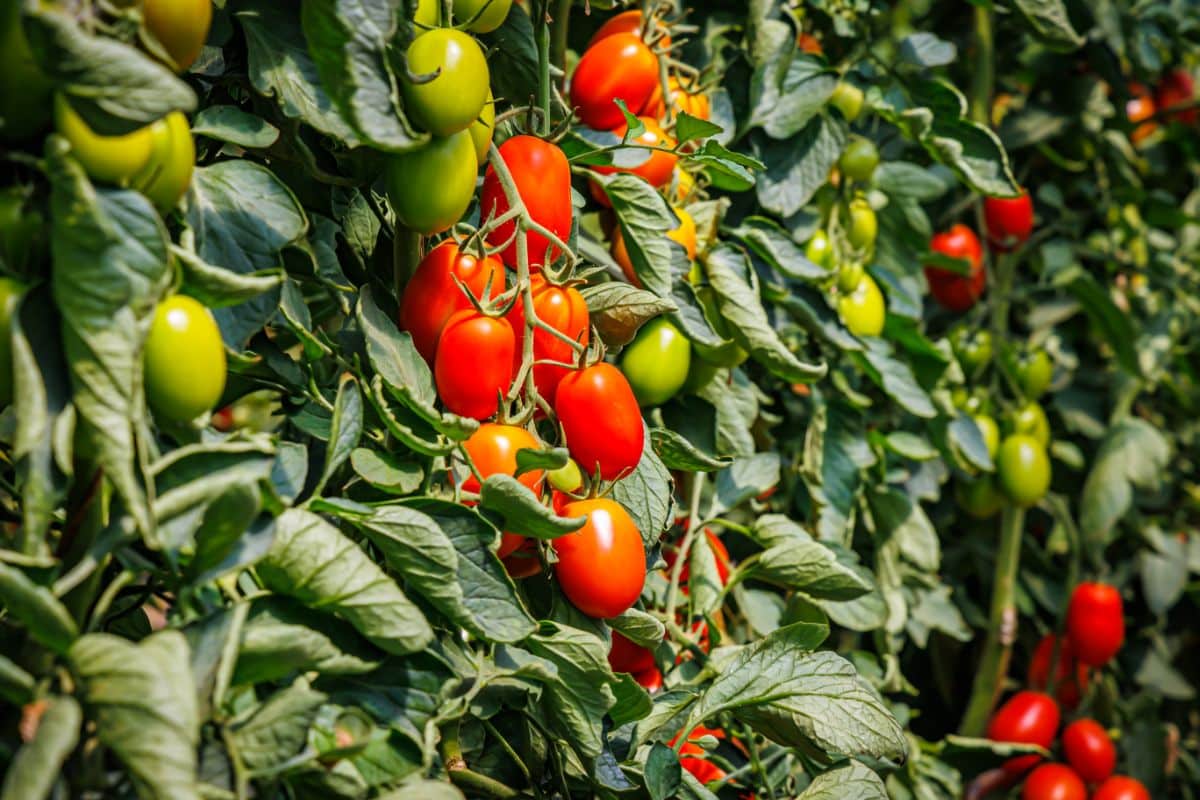
| Tomato variety: | Roma |
| Days to maturity? | 76 days |
| Indeterminate or determinate? | Determinate |
| Open-pollinated? | Yes |
| Tomato color? | Red |
‘Roma’ tomatoes are plum paste tomatoes that are also used for sauce making and salsas, and they tend to be easier to find at garden centers than ‘Amish Paste’ or ‘San Marzano’ plants. ‘Roma’ tomatoes are good, versatile tomato that is deliciously fresh, canned, or sundried. Plus, ‘Roma’ tomatoes have thick walls and minimal seeds, which makes drying them even easier.
‘Roma’ plants are prolific growers, and they also have a good deal of disease resistance to common tomato issues, including verticillium wilt and fusarium wilt. These plants are determinate growers too, which means they tend to produce all of their fruit at once. While they won’t give you a long harvest window, harvesting, and processing ‘Roma’ tomatoes can be much more efficient because you can gather all the tomatoes in at one time.
4. Principe Borghese
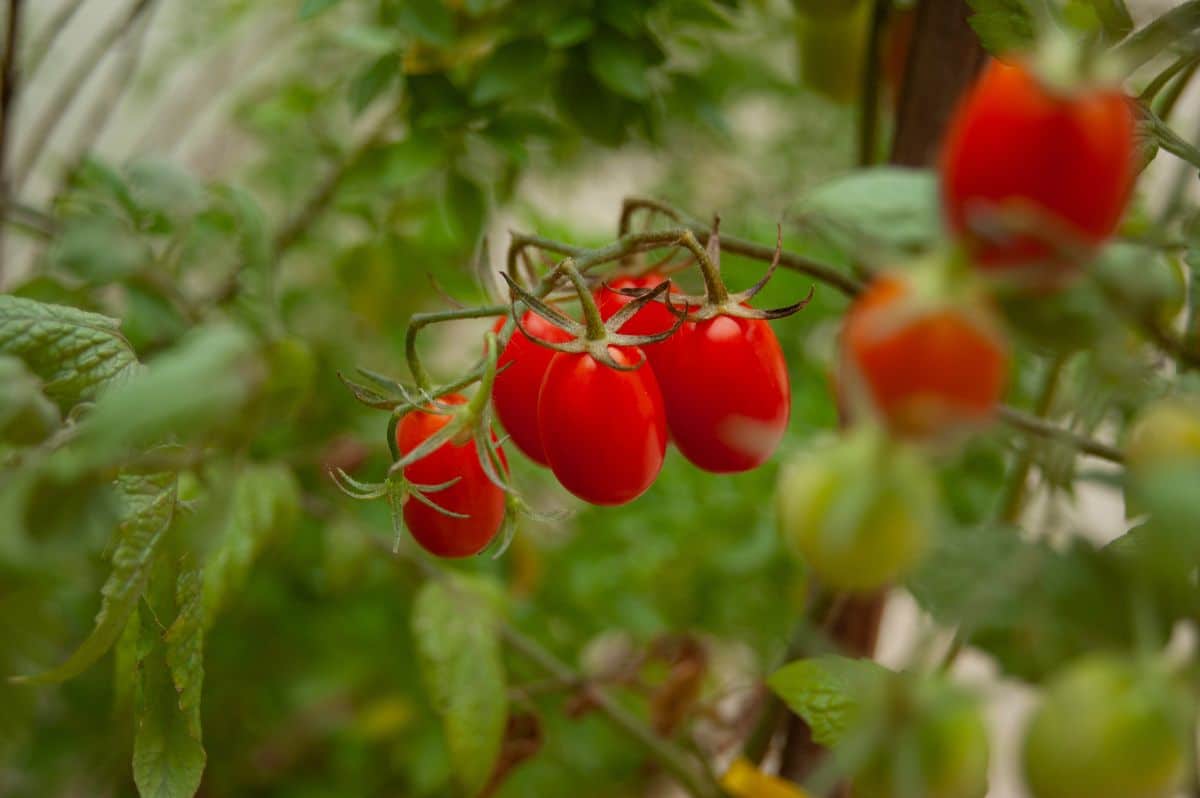
| Tomato variety: | Principe Borghese |
| Days to maturity? | 73 days |
| Indeterminate or determinate? | Determinate |
| Open-pollinated? | Yes |
| Tomato color? | Red |
A true “foodie” tomato, ‘Principe Borghese’ is possibly the most famous tomato variety for sun drying. This vigorous plant produces small, 1 to 2-ounce plum tomatoes that have very little juice for easy drying. What’s more, unlike other most other tomatoes, ‘Principe Borghese’ tomatoes stay attached to the vine as they ripen, so you can dry the tomatoes right on the plant!
If you like the idea of drying ‘Principe Borghese’ tomatoes on the vine, you can pull up the entire plant and hang it upside down indoors to dry. Once the tomatoes are dehydrated, all you need to do is pluck them from the plant and store them for later use. Just be sure to give ‘Principe Borghese’ plants plenty of support as they grow because they produce so many tomatoes the plant can break under its own weight!
5. Hog Heart
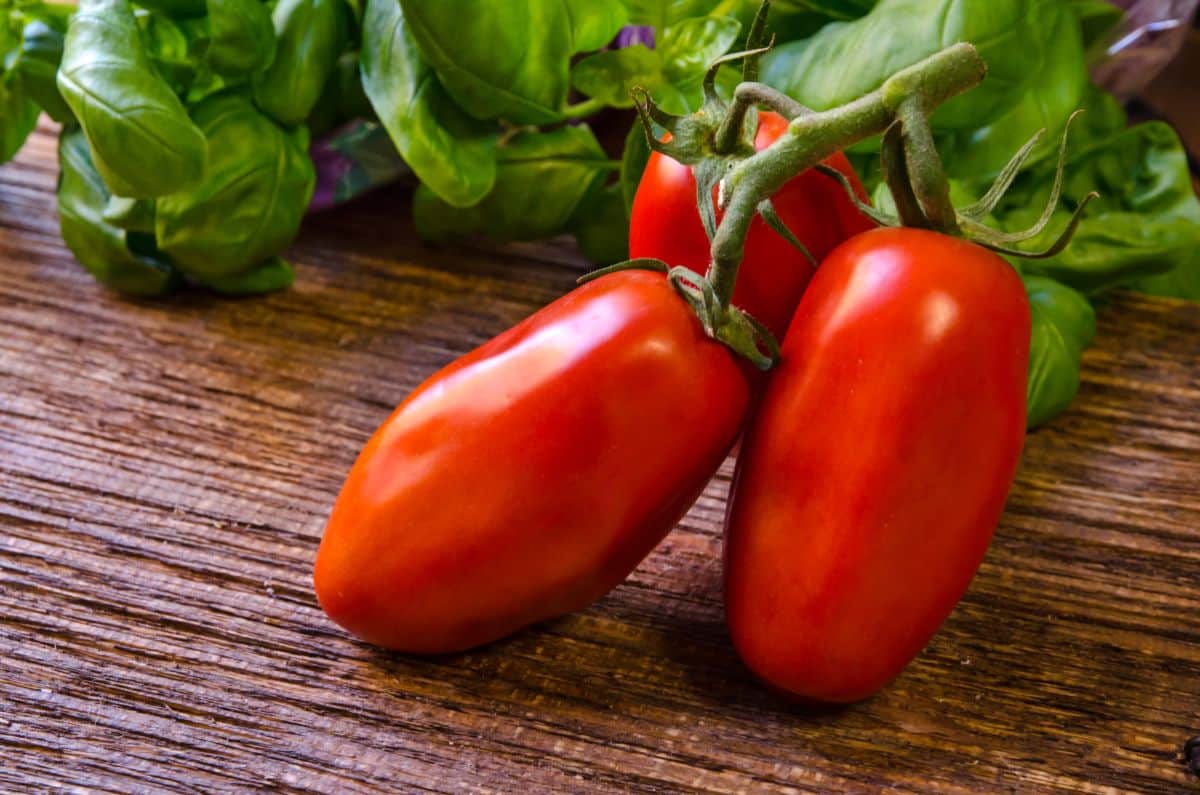
| Tomato variety: | Hog Heart |
| Days to maturity? | 86 days |
| Indeterminate or determinate? | Indeterminate |
| Open-pollinated? | Yes |
| Tomato color? | Red |
‘Hog Heart’ tomatoes were brought from Italy, and they began making the rounds in seed catalogs in the United States around the turn of the 19th century. Named for their heart-shaped, double fruits, ‘Hog Heart’ tomatoes are large for a paste tomato, and they have a nice, meaty texture and very few seeds. If you’re lucky, you may be able to grow massive ‘Hog Heart’ tomatoes that weigh in at over 3 pounds each, although most of these tomatoes max out at around 6 to 8 ounces.
Paste tomatoes, like ‘Hog Heart’ tomatoes, are usually used for sauce making, but the same qualities that make them good for blending into pasta sauces means they will dry well too. ‘Hog Heart’ tomatoes are indeterminate growers, and they can produce tomatoes throughout the season and even into fall in mild climates. These plants will benefit from tall trellising, and they’re also open-pollinated, making them ideal for seed saving too!
6. Grandma Mary’s
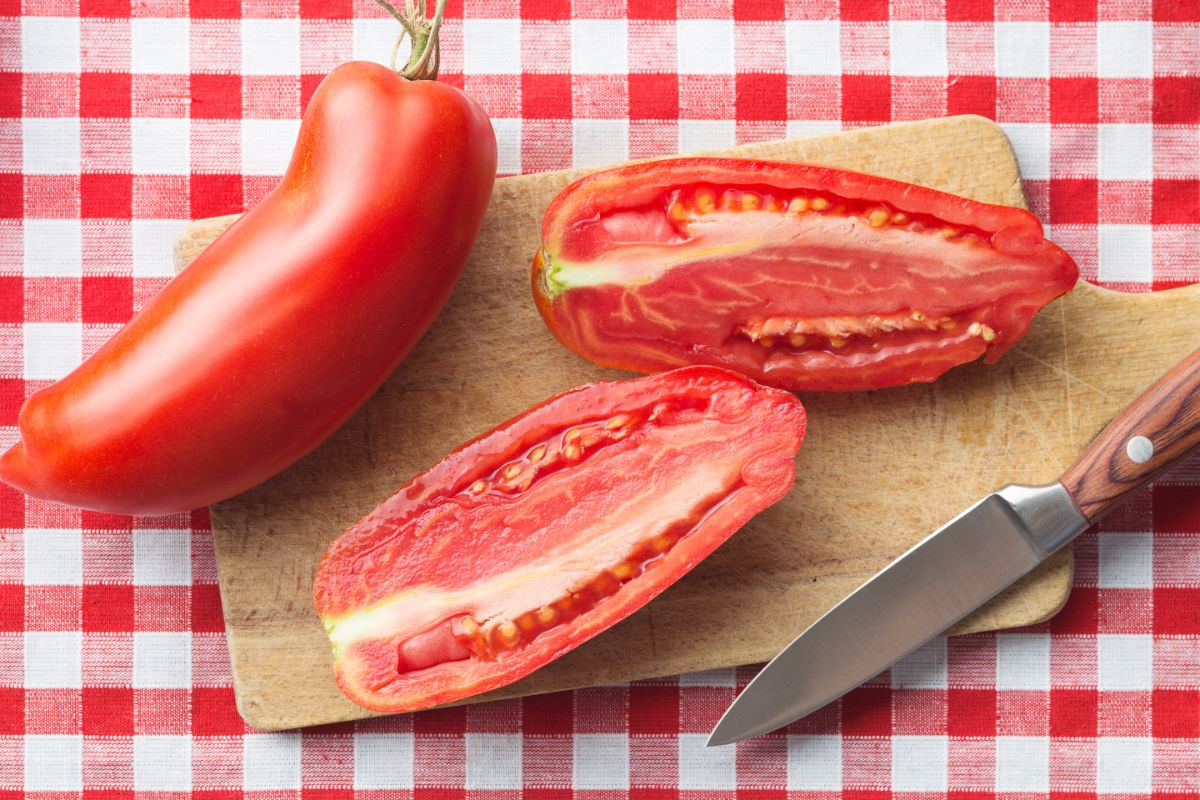
| Tomato variety: | Grandma Mary’s |
| Days to maturity? | 68 days |
| Indeterminate or determinate? | Indeterminate |
| Open-pollinated? | Yes |
| Tomato color? | Red |
Compared to heirloom classics like ‘San Marzano’ and ‘Amish Paste,’ ‘Grandma Mary’s’ tomatoes are a relatively new development. These large, paste tomatoes have a perfect balance of sweet and tangy flavor that makes them great for cooking and, yes, drying too! Even better, these plants mature faster than many other tomato varieties and can be ready to harvest in about 70 days.
Traditionally, sundried tomatoes were dried outdoors in the sun, and they can still be made on screening that allows air to flow on all of the tomatoes’ sides. For faster processing, sundried tomatoes can also be preserved with a dehydrator. Although this isn’t technically “sun” drying, it gives you more control over your tomatoes and allows you to make sundried tomatoes regardless of the weather!
7. Costoluto Genovese
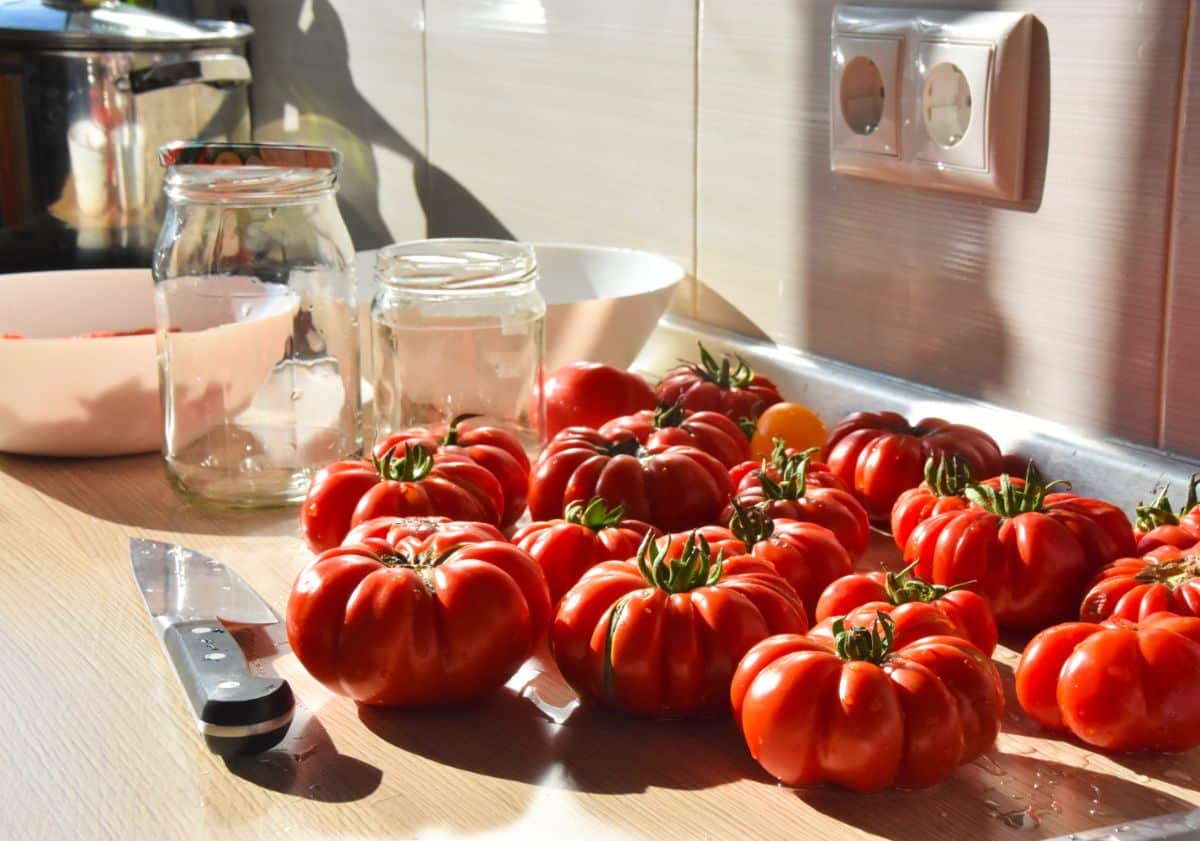
| Tomato variety: | Costoluto Genovese |
| Days to maturity? | 75 days |
| Indeterminate or determinate? | Indeterminate |
| Open-pollinated? | Yes |
| Tomato color? | Red |
Plum tomatoes are the most common tomato varieties used for sun-drying since their small size makes them easy to work with. But if you’re looking for a versatile tomato that is good for canning, drying, and slicing, ‘Costoluto Genovese’ may be the tomato variety for you. This tomato is a top choice among chefs, and it’s commonly used in Italy for fresh eating and preservation.
‘Costoluto Genovese’ has been around since at least the early 19th century, and it’s known for its rich flavor, flattened form, and deeply ribbed sides. This tomato has a good level of acidity but enough sugary sweetness to balance it out. Its meaty texture is also just right for drying, although you may want to cut these tomatoes up into smaller pieces before dehydrating them.
8. Costoluto Fiorentino
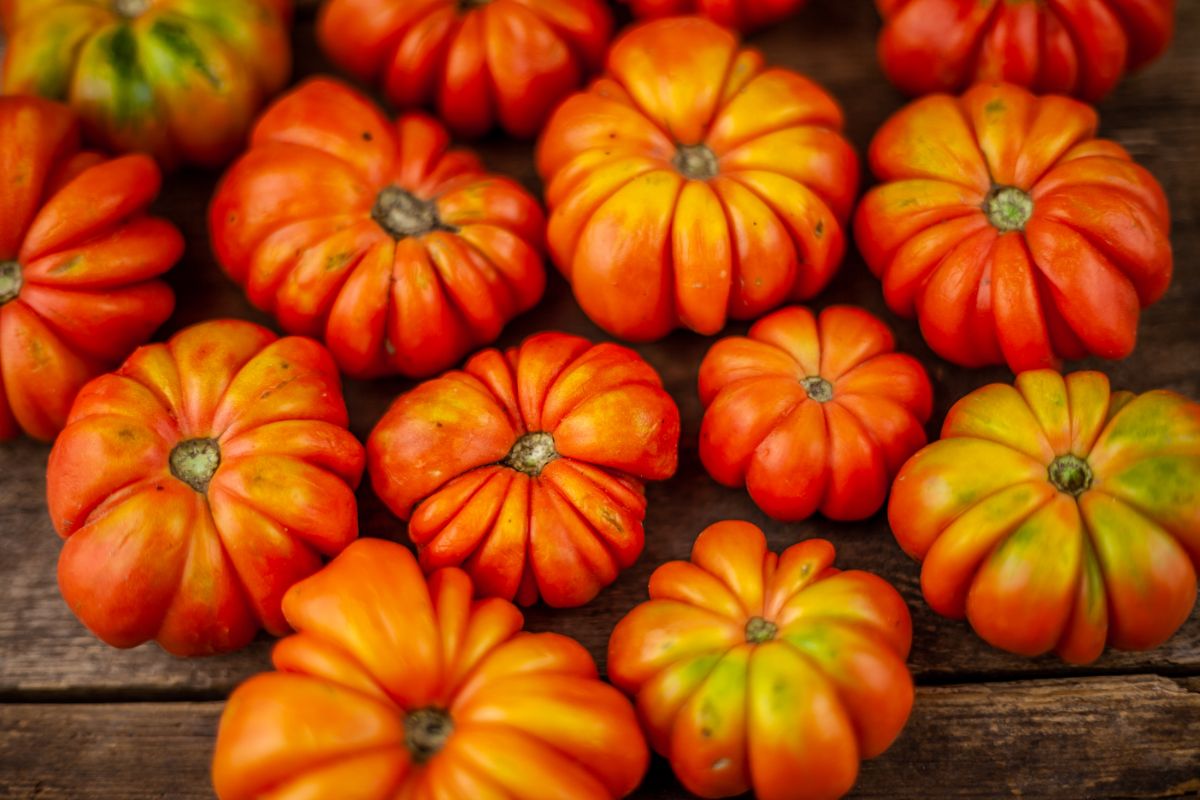
| Tomato variety: | Costoluto Fiorentino |
| Days to maturity? | 80 days |
| Indeterminate or determinate? | Indeterminate |
| Open-pollinated? | Yes |
| Tomato color? | Red |
A close relative of ‘Costoluto Genovese,’ ‘Costoluto Fiorentino’ is another Italian favorite that hails from Florence. This tomato looks similar to ‘Genovese’, but it’s even flatter, with average fruit measuring about 1” high by 4” in diameter. If you want to make standard-sized sundried tomatoes with ‘Fiorentino,’ try quartering the tomatoes before processing them.
‘Costoluto Fiorentino’ is a bit harder to find than ‘Genovese.’ but if you can track down the seeds, it’s worth growing. While these tomatoes can be used as standard slicing tomatoes, their complex flavor really comes alive with cooking or drying. These tomatoes also begin producing earlier than some of the other tomatoes on this list, but they will need trellising as they grow indeterminately.
9. Zapotec
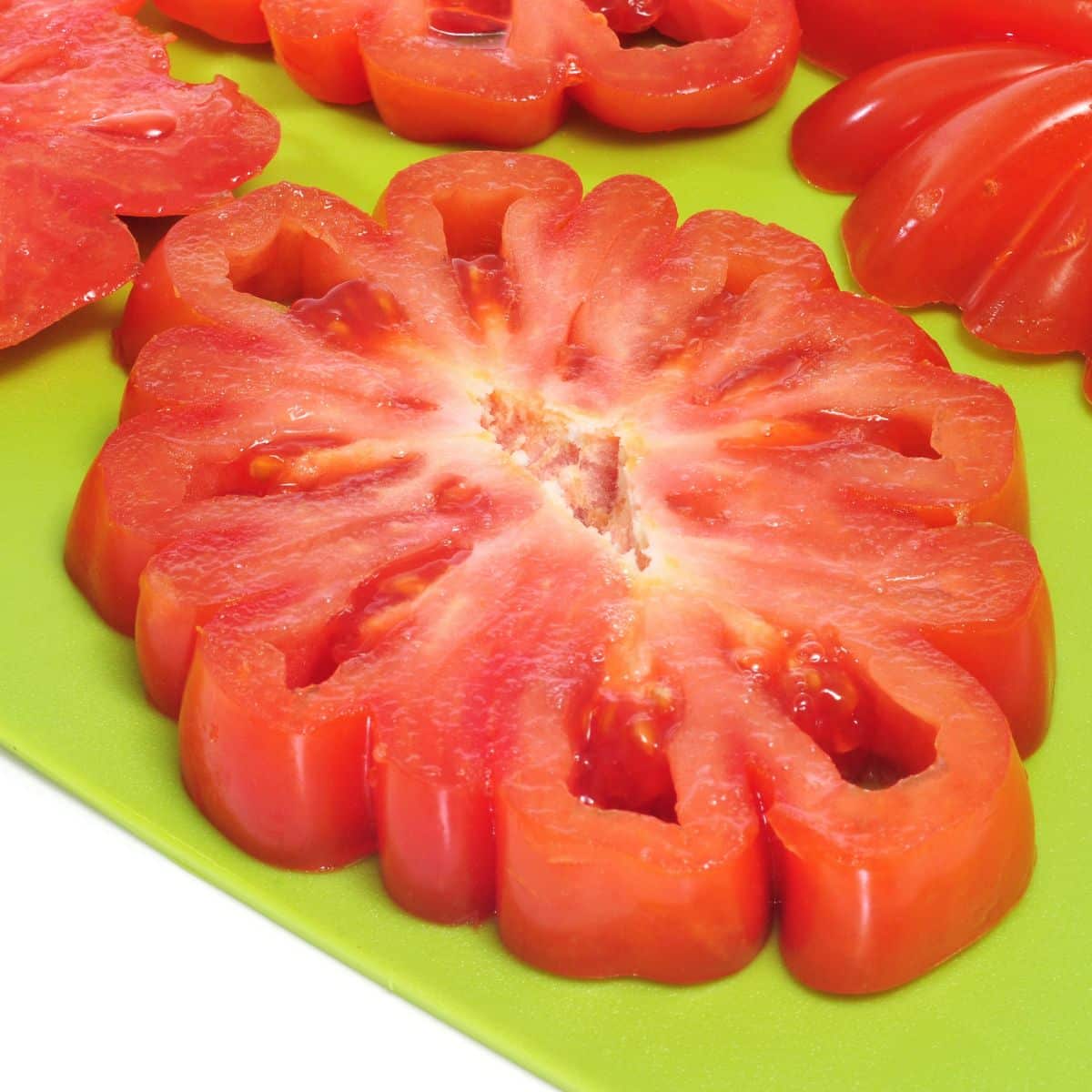
| Tomato variety: | Zapotec |
| Days to maturity? | 85 days |
| Indeterminate or determinate? | Indeterminate |
| Open-pollinated? | Yes |
| Tomato color? | Red |
Known as a “chef’s tomato,” ‘Zapotec’ is a unique tomato variety that has fruit with such deep ribbing that it almost looks like it’s pleated. This tomato variety comes from the dry deserts of Mexico and is particularly well-suited for gardens in arid climates as it has a good deal of drought resistance. ‘Zapotec’ tomatoes are also naturally on the drier side, making them super easy to turn into sundried snacks!
‘Zapotec’ can be harder to find at local nurseries, but you can usually find the seeds online or in some specialty seed catalogs. This plant reliably yields large harvests, so you should have plenty of tomatoes on hand for drying. If you want to experiment further with ‘Zapotec,’ these tomatoes have relatively hollow centers that are perfect for stuffing!
10. Opalka
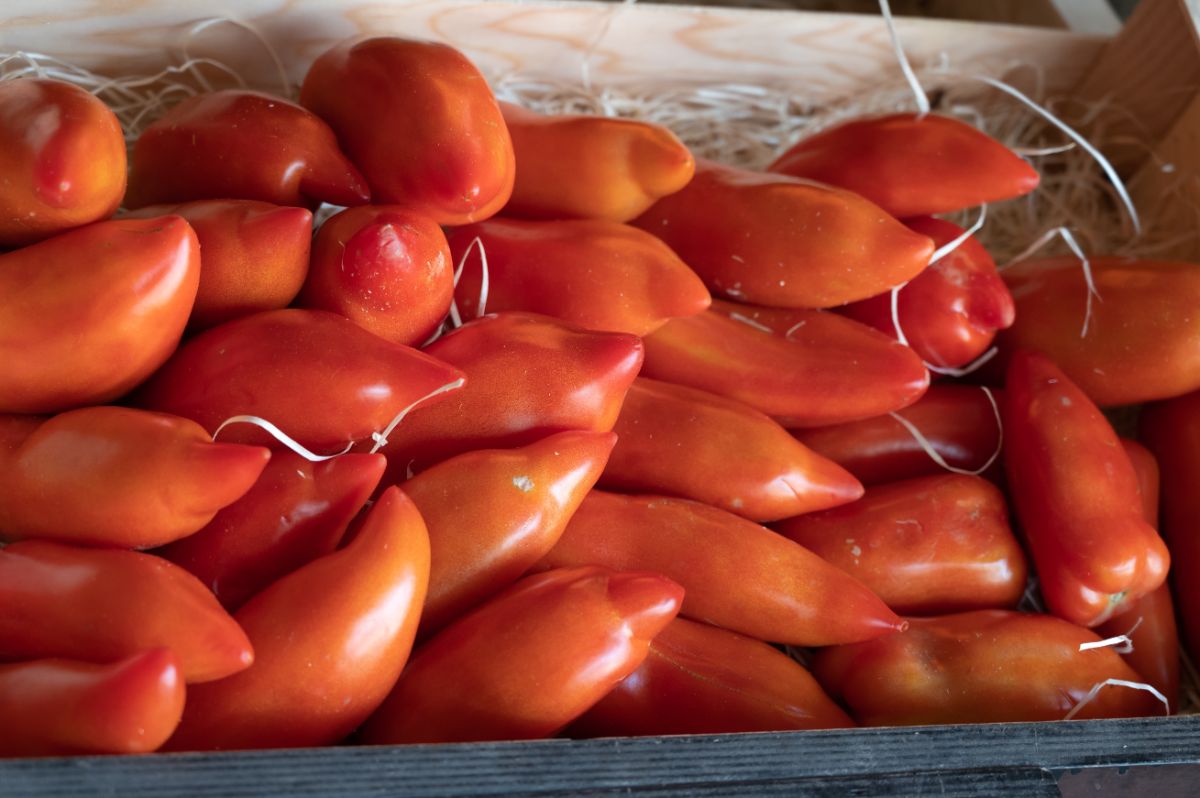
| Tomato variety: | Opalka |
| Days to maturity? | 85 days |
| Indeterminate or determinate? | Indeterminate |
| Open-pollinated? | Yes |
| Tomato color? | Red |
Legend says that ‘Opalka’ tomatoes were developed in Poland in the early 20th century. Although there’s not a lot written down about how ‘Opalka’ developed, what is known is that these paste tomatoes taste delicious when sundried! Balanced with sweetness and acidity, ‘Opalka’ tomatoes are flavorful and have minimal seeds for easy processing.
Like other tomatoes, ‘Opalka’ should be grown in full sun, and it will need regular watering to produce a good fruit set. As an indeterminate growing plant, ‘Opalka’ will benefit from trellising, and it may be too large for small garden plots. That said, even indeterminate plants like this one can often be squeezed into small space gardens with single-stake trellising or sturdy tomato cages.
11. Roman Candle
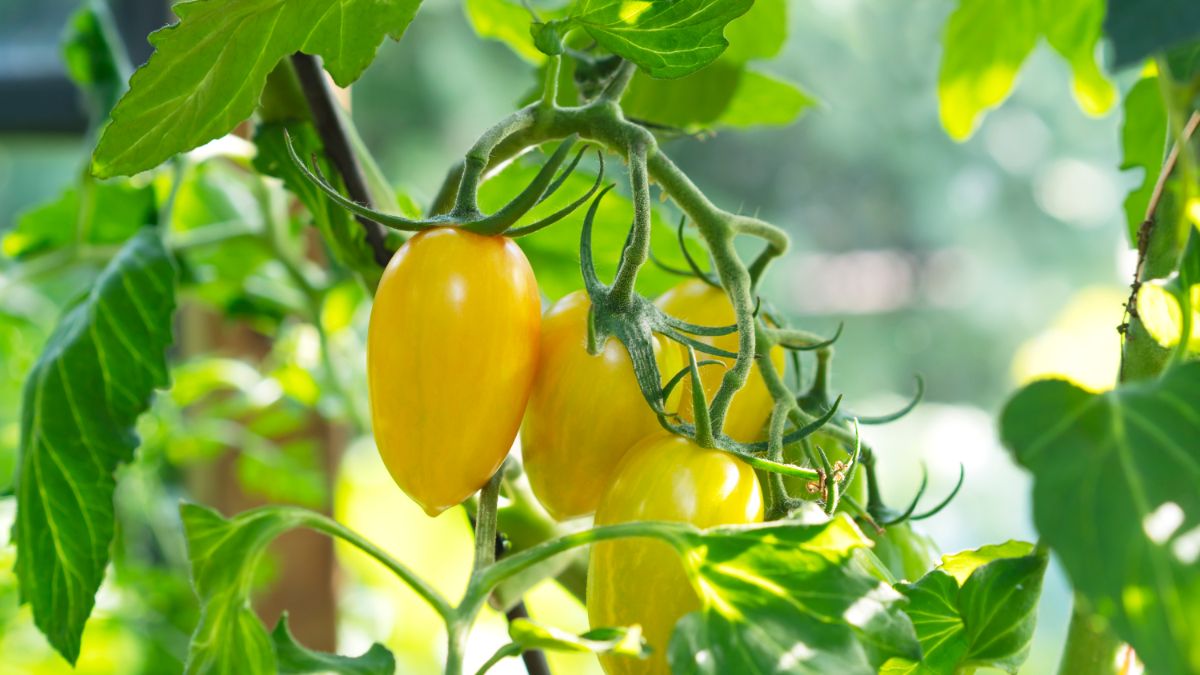
| Tomato variety: | Roman Candle |
| Days to maturity? | 85 days |
| Indeterminate or determinate? | Indeterminate |
| Open-pollinated? | Yes |
| Tomato color? | Yellow |
Storebought sundried tomatoes are almost always red, but if you’re craving something different, you can grow your own uniquely colored tomatoes for drying. One good option is the bright yellow ‘Roman Candle’ tomato, which looks a bit like a banana pepper. This paste-type tomato is sweet and meaty, and it has just a few seeds, so you know it’s exceptional when dried in the sun!
‘Roman Candle’ tomatoes are a bit rarer, and you’ll likely need to order them online. These plants begin to yield fruit in about 80 days, but like other indeterminate plants, they have a long harvest window and can continue to be harvested throughout the summer. Beyond drying, ‘Roman Candle’ tomatoes also cook down beautifully into colorful salsas and sauces.
12. Black Plum
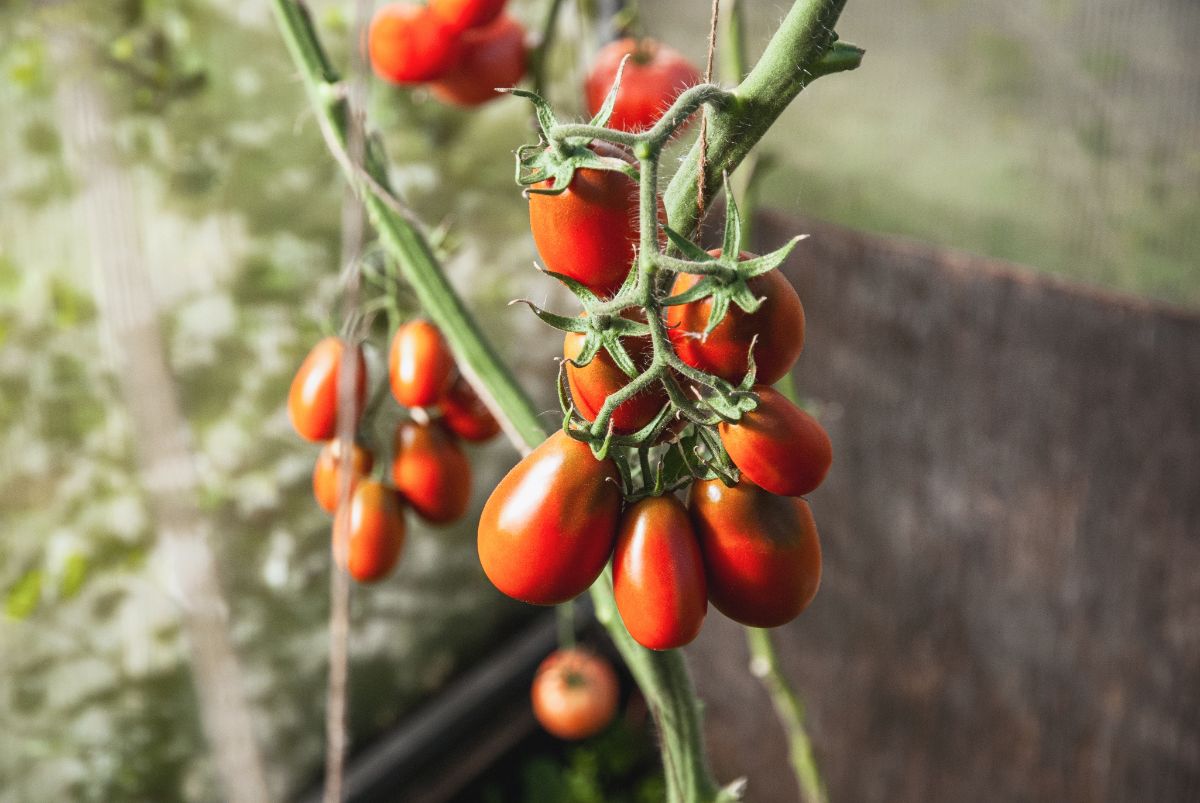
| Tomato variety: | Black Plum |
| Days to maturity? | 82 days |
| Indeterminate or determinate? | Indeterminate |
| Open-pollinated? | Yes |
| Tomato color? | Dark red |
Another option for any gardener who wants to branch out from red tomatoes is the ‘Black Plum.’ Sometimes known as ‘Russian Black’ tomatoes, these plants produce smaller fruit than the other tomato varieties on this list, but they do dry well. ‘Black Plum’ tomatoes average about 2” long, and they have a dusky red skin that makes them stand out among other sundried tomato varieties.
‘Black Plum’ tomatoes are good for drying due to their meaty texture, low moisture content, and small seed cavities. These qualities also make ‘Black Plum’ good for cooking into sauces and salsas. Flavor-wise, ‘Black Plum’ is similar to ‘Roma’ tomatoes with a sweet and acidic flavor, although these tomatoes have slightly thinner walls.
13. Speckled Roman
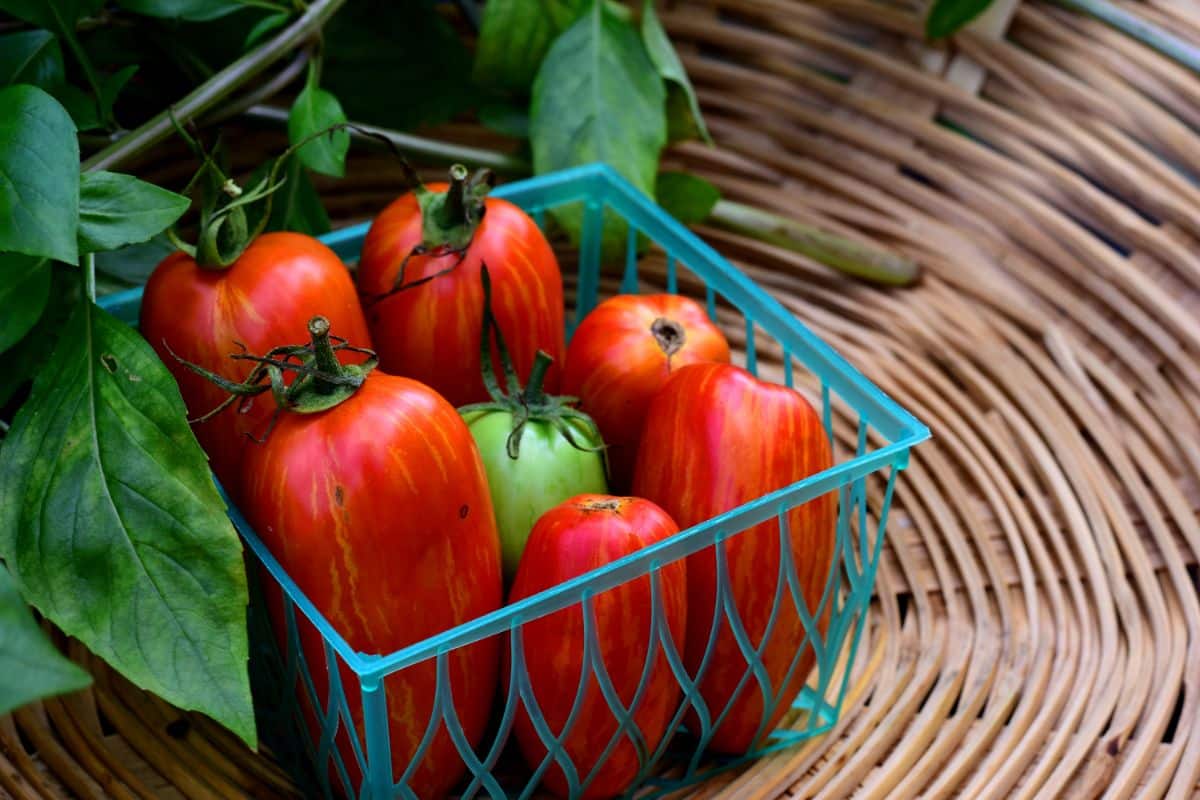
| Tomato variety: | Speckled Roman |
| Days to maturity? | 85 days |
| Indeterminate or determinate? | Indeterminate |
| Open-pollinated? | Yes |
| Tomato color? | Striped red and yellow |
‘Speckled Roman’ tomatoes bring something unexpected to the garden with their colorful and striated red and yellow skin. But these plants aren’t just pretty. They also yield an abundance of plum tomatoes with excellent flavor and a thicky, meaty and juice-free texture that’s ideal for drying.
If you don’t want to use all of your ‘Speckled Roman’ tomatoes for drying, these multipurpose tomatoes are also delicious in homemade pasta or pizza sauces, and they cook down beautifully in other dishes too. Like other indeterminate tomatoes, ‘Speckled Roman’ plants can get quite large, and they will need extra support from trellises, cages, or stakes as they grow. When planted from seed, ‘Speckled Roman’ plants should begin to yield tomatoes in about 85 days, and they can continue to fruit through the end of the growing season.
14. Sunrise Sauce
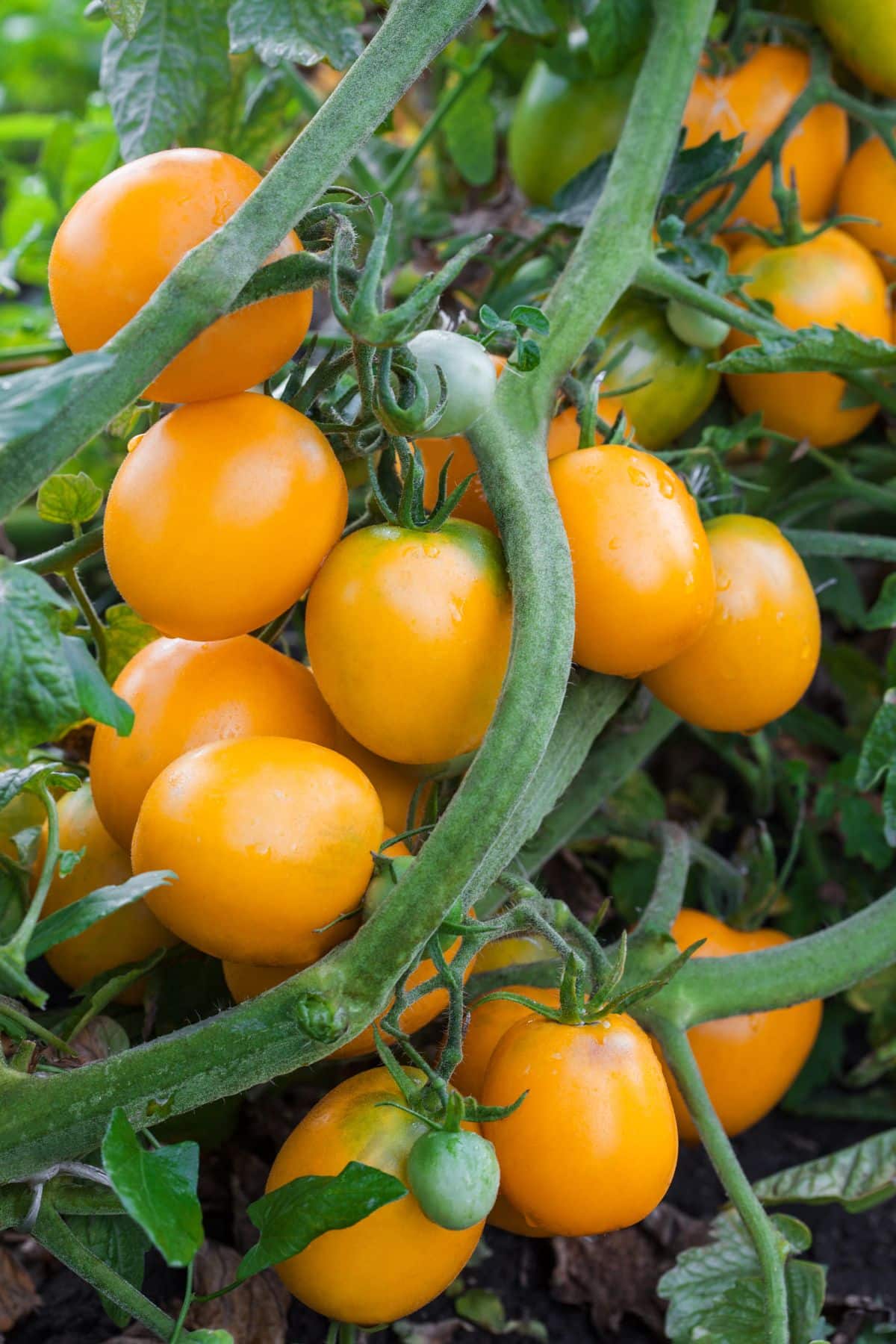
| Tomato variety: | Sunrise Sauce |
| Days to maturity? | 57 days |
| Indeterminate or determinate? | Determinate |
| Open-pollinated? | No |
| Tomato color? | Golden yellow |
Like ‘Roman Candle,’ ‘Sunrise Sauce’ tomatoes have bright yellow fruit with a deep golden tone. Excellent for sauce making, these sturdy tomatoes have a perfect texture for sun-drying, and their low moisture content means they’ll dry quickly too. Beyond that, ‘Sunrise Sauce’ tomatoes have an intensely sweet flavor that holds up well even after preservation.
As determinate growers, ‘Sunrise Sauce’ tomato plants stay smaller than many of the other plants on this list, making them easy to keep in containers or smaller garden spaces. They also produce the majority of their fruit all at once, allowing you to can or dry them in bulk. ‘Sunrise Sauce’ matures earlier than many other tomato varieties, but as hybrids, they aren’t good for seed saving.
15. Blue Beech
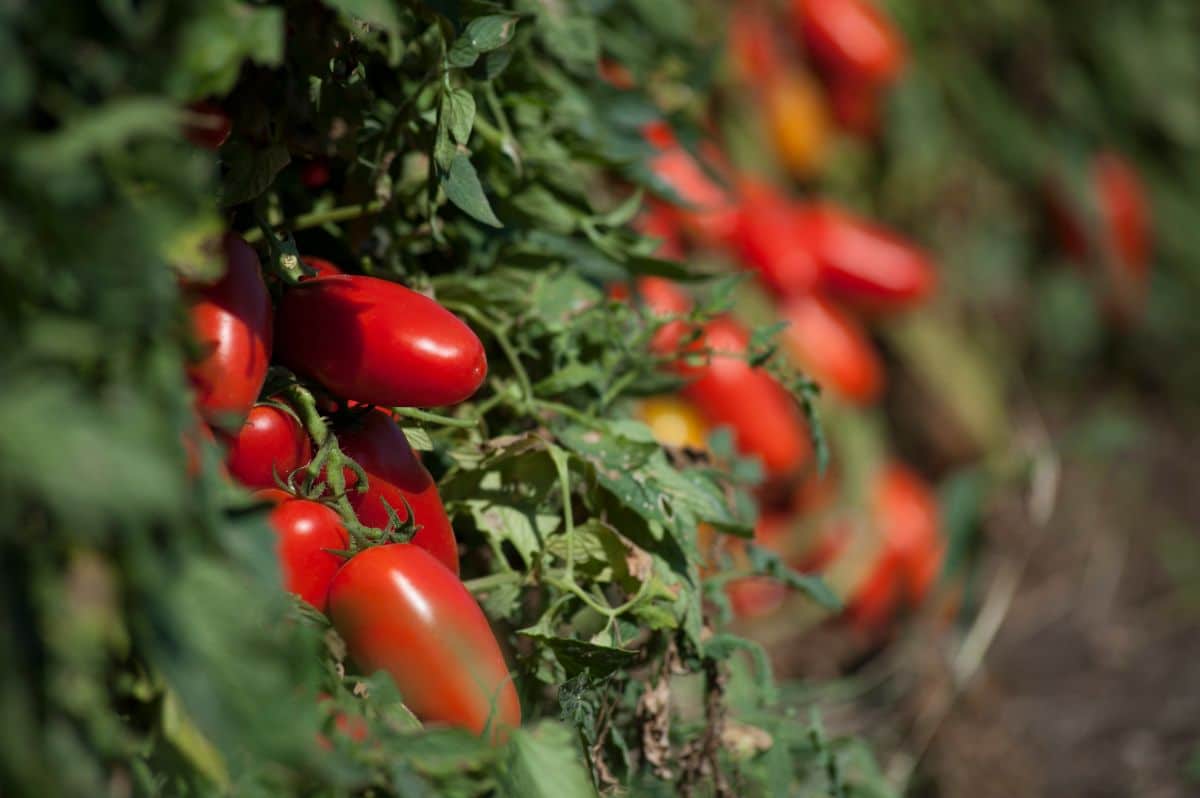
| Tomato variety: | Blue Beech |
| Days to maturity? | 82 days |
| Indeterminate or determinate? | Indeterminate |
| Open-pollinated? | Yes |
| Tomato color? | Red |
Originally brought from Italy during World War II, ‘Blue Beech’ tomato plants have a bit of history and a luscious flavor too! These “sausage-type” tomatoes have an elongated form that tapers at the end, and their green shoulders also give them a distinct heirloom look that’s certain to attract interest at farmer’s markets. And while ‘Blue Beech’ makes a quality sundried tomato, these tomatoes also have a nice, balanced flavor that’s perfect for fresh eating too!
While ‘Blue Beech’ tomatoes grow indeterminately, they tend to produce much of their fruit in a short period of time. These tomatoes also have a good deal of disease resistance, and they’re less likely to succumb to blossom end rot than many other tomato cultivars. As with other indeterminate growing tomatoes, if you prune away some of the suckers on this plant, you should get a larger and tastier harvest of tomatoes!
Frequently asked questions

The secret to growing your own sundried tomatoes begins with choosing the right tomato varieties. After harvesting tomatoes, plum tomatoes should be cut in half, and larger tomatoes will need to be cut into smaller sections. Then tomatoes should be placed on screens or in a food dehydrator until they’re nice and dry.
Paste tomatoes are usually the best tomato varieties for drying. These tomatoes have small seed cavities and dense, meaty flesh with a low moisture content. You can use other tomatoes for drying too, but they usually need to be processed longer because they have higher moisture levels.
To make your own sundried tomatoes, cut the tomatoes into sections and salt them. Then place the tomatoes on screens in a hot and sunny location until they’re dry. Tomatoes may need to be protected from the weather and brought indoors at night to make sure they dry properly and aren’t gobbled up by animals.
Yes, sundried tomatoes and dehydrated tomatoes are essentially the same, although some foodies argue that tomatoes that are dried in the sun have a bit more flavor. However, if you want to make your own sundried tomatoes, there’s no reason why you can’t use a dehydrator. Dehydrating tomatoes is usually quicker, and it gives you more control over the drying process, so you won’t need to worry about pests or the weather when making your tomatoes!
Homemade sundried tomatoes should be packaged in airtight packaging and stored in a cool, dark place for up to nine months (dried fruit only, not packed in oil, etc.). They can also be stored in the fridge or freezer if packed in oil. If Packed in this manner, sundried tomatoes should stay fresh for 2 weeks in the fridge or up to 9 months in the freezer. For longer-term storage, sundried tomatoes can also be canned using this canning method, but make sure you follow proper canning protocols when processing.
Sundried tomatoes have a more intense, tomatoey flavor, which can elevate the taste of pasta dishes, sauces, and dips. You can also blend sundried tomatoes into your own homemade salad dressings, make them into pesto, add them to veggie burger recipes or stir them into soups and stews. Always handy to have in your pantry, sundried tomatoes are packed full of flavor and easy to use!
Summary
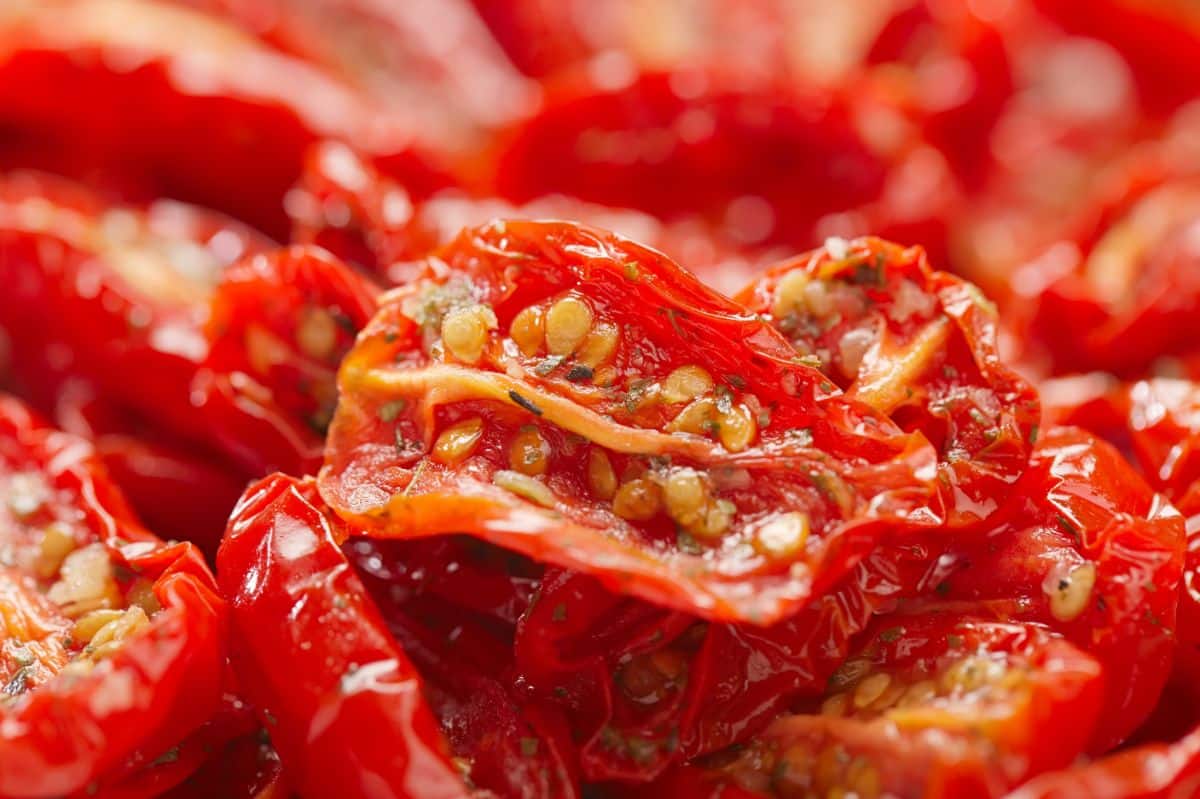
If you’ve ever kept a garden and grown your own produce, you know how much more succulent homegrown tomatoes, strawberries, and carrots can be. Compared to grocery store produce, veggies harvested from your backyard can be packed full of so much flavor that you don’t even need to season them!
Just like fresh tomatoes from your garden, homemade sundried tomatoes can be even tastier than storebought ones, and making them can be incredibly easy too. Once you’ve made a batch of sundried tomatoes, you can add them to tons of recipes or freeze them and use them throughout the winter months. Savory and satisfying, sundried tomatoes may be your favorite homegrown garden product yet!
For more ideas on edible crops to grow in your garden, check out our guide on the best herbs to keep for homemade teas, or learn how to preserve green tomatoes with this simple tutorial.

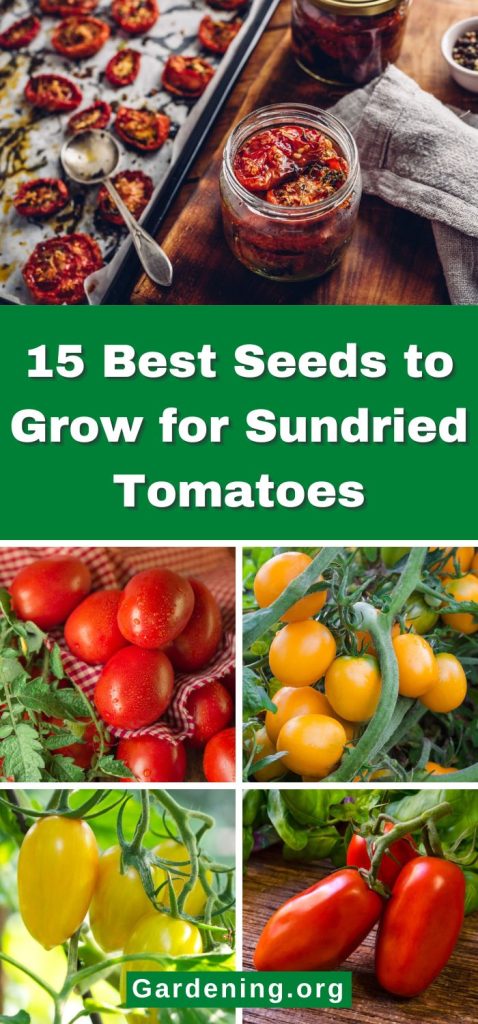
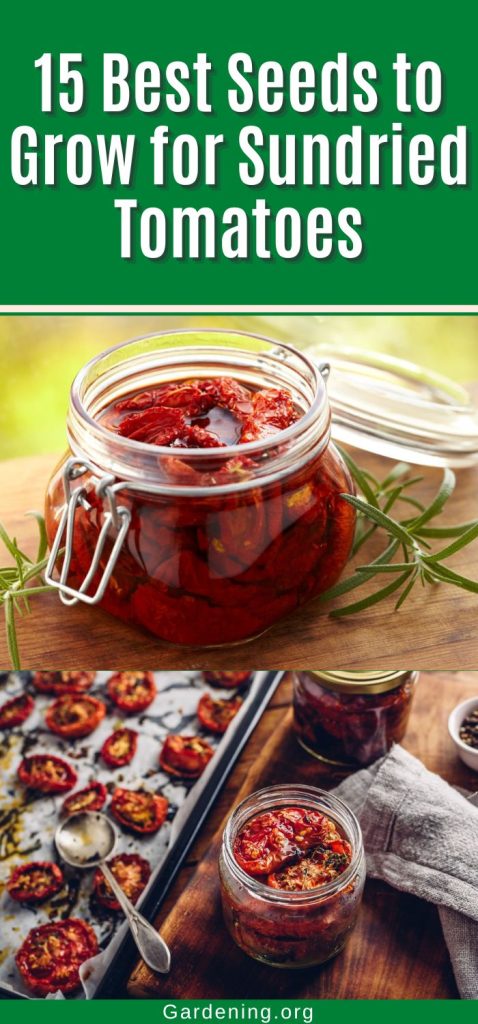
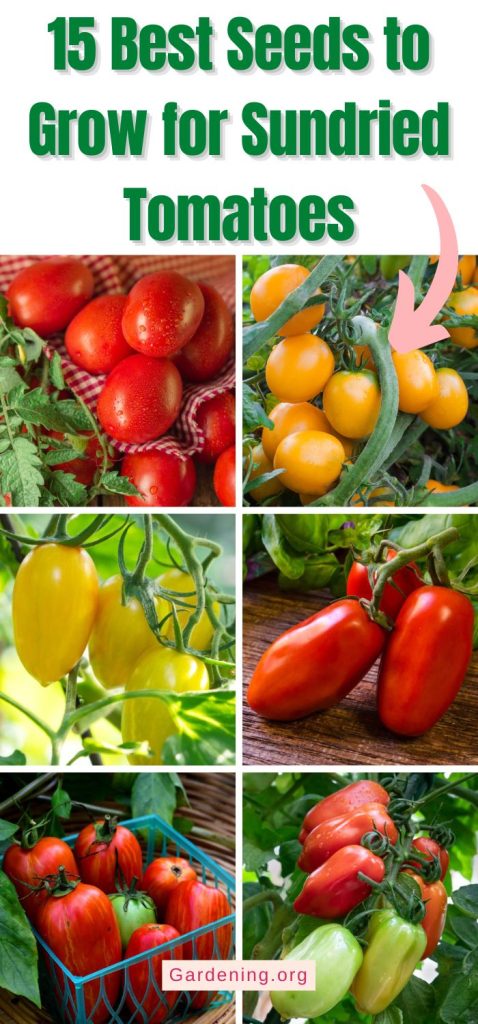
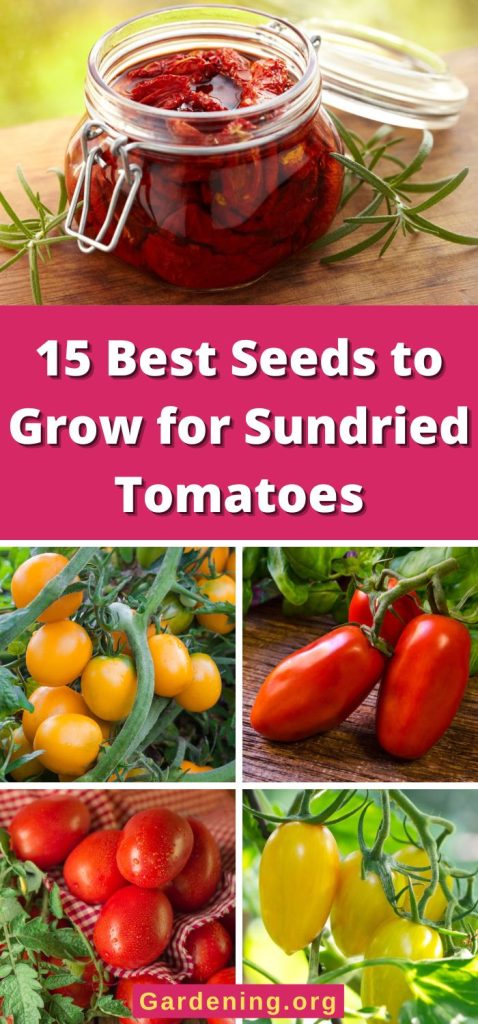
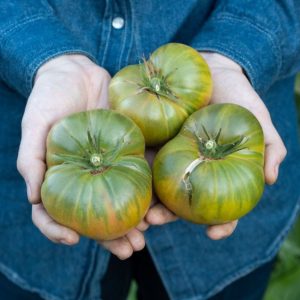

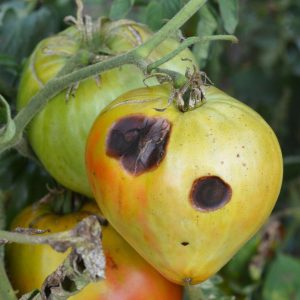

Leave a Reply